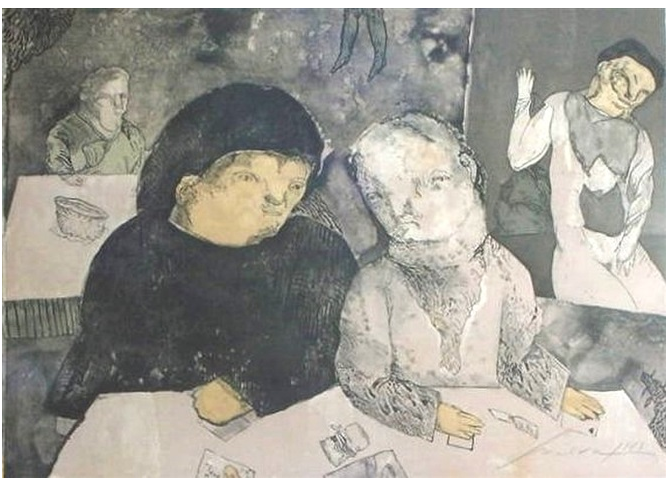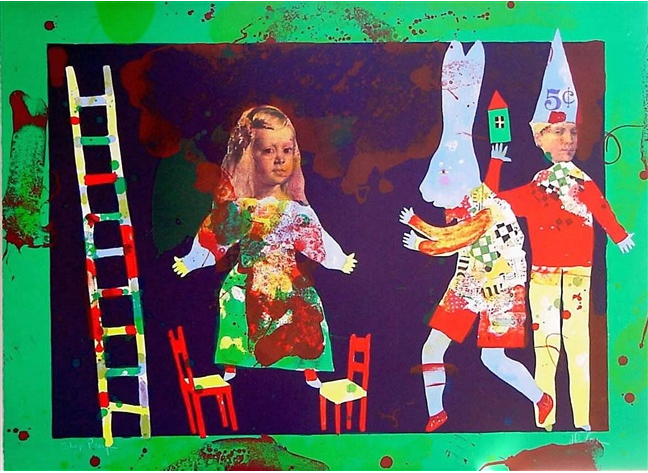People
artnet Asks: Mary Roth-Davies on Preserving Legacy
We talk to the collector about her thoughts on the legacy and future of Latin American art.

We talk to the collector about her thoughts on the legacy and future of Latin American art.

Artnet Galleries Team

There is something to be said about a collector’s affinities and the passion that fuels their practice. A collection can be so intimately drawn together that it can represent the personal narratives of both the artist and the collector. There has been a recent resurgence of interest in the role of art collecting—as seen in this year’s New Museum exhibition, “The Keeper”—and showcasing different expressions of preservation. Much of art history has been established by those individuals who, for better or for worse, have dedicated themselves to owning works of art. For Mary Roth-Davies, her gallery collection is a direct bloodline and represents more than the preservation of history. She represents the De Soto Collection of Latin American Art, one of the most influential Latin American printmakers, and the first Mexican-American master print maker to work in the United States. In this interview, we ask Roth-Davies the importance of De Soto’s legacy, her own journey as a collector, and her thoughts on the future of Latin American art.
Tell us about your background in art.
My career was in the corporate world. I knew nothing about art. However, several years ago, my uncle decided to give each of his nieces and nephews a print from his collection. I received a print by Thomas Akawie and another by Luis Granda. The Granda he chose for me was not exactly to my taste, so I decided to give it back. I thought the only respectful way to do that was to bring it back in person. Once I did, we went through his collection and I ended up bringing home my first José Luis Cuevas and a new appreciation for the art industry, as well for Latin American art. I was pursuing a degree in marketing, but changed to art history instead. Today, I manage Ernest De Soto’s collection and his legacy as the first Mexican-American master printmaker in the United States.

Mary Roth-Davies.
What is your relationship to Ernest De Soto?
Ernest is my uncle. He was married twice, but had no children. I became very much like a daughter to him, caring for his welfare, and managing his collection while learning more about his life. He lived in Tucson, while I moved from place to place. We built a close relationship through weekly phone conversations, and I would frequently visits his home in Southern Arizona. Each time I was with him, we talked about his life as a printmaker and the people he worked with.
Tell us about the De Soto Collection of Latin American Art. What makes it special?
This month we will celebrate what would have been Ernest De Soto’s 93rd birthday. In his lifetime, he created a legacy that included his commitment to his Latin American heritage and to the medium of printmaking. He was the first Mexican-American Master printmaker in the United States, and was deeply involved in the first group of artists to come out the original Tamarind Lithography Workshop in LA.
From the start, he involved himself with prominent Latin American artists of his time, and the quality of his collection is based on those collaborations. Every piece, every artist, benefited from his personal collaboration with the artist. He didn’t just facilitate the printmaking process—he was deeply involved in the creative process as well. He developed drawing tools for Gunther Gerzso that allowed him to create his hard-line abstract pieces, he worked with Maximo Javier to develop his color palette when he discovered Javier was color blind, he developed a new and innovative lithography process to separate colors, and he built such a strong support system for José Luis Cuevas that the artist refused to work with anyone else.
His commitment went far beyond the print shop. He was on the board of trustee of the Mexican Museum, was deeply involved in the Chicano art movement in San Francisco, and endowed scholarships for young Hispanic artists in Tucson.

José Luis Cuevas, Los Papeles de Salazar (1984). Courtesy of the De Soto Collection of Latin American Art.
What are some changes that you’ve noticed in the Latin American art market over time?
I think that the market has grown from a small group of Mexican muralists to a diverse group of artists from Mexico and Central and South America. I see an awakening of the public to the quality of work coming out of this part of the world as more and more artists receive the recognition they deserve. Today all the major auction houses have a dynamic Latin American art divisions, and all have specialized Latin American auctions that feature prominently in their spring and fall calendars.

DeLoss McGraw, Aspects of Alice (1989). Courtesy of the De Soto Collection of Latin American Art.
Cildo Meireles, Daphne Arthur, Guillermo Kuitca, and their contemporaries are expanding the borders of Latin American art through their creative endeavors. Economically, Latin American art is breaking the million-dollar mark on a regular basis, with collectors coming from China, Japan, and Russia to join their American and European competitors. It’s considered one of the fastest-growing markets today.
Who are some of your favorite artists? How about some favorites in your collection?
I am very partial to Leonora Carrington, Remedios Varos, Louise Bourgeois, Francisco Zuniga, and Gunther Gerzo. I adore the tapestries of Archie Martin, a Scottish tapestry artist who specializes in graphic figurative images and am quite taken by the work of Claudio Bravo.
If you could own any artwork, what would it be and why?
I would love to add a sculpture by Francisco Zuñiga to my collection and am on the lookout for one of his Mujer pieces. I would also love to own a piece by Jose Clemente Orozco, as I find his pieces haunting. I love the way he brings together the personal and political in his works. Finally, adding a textile piece by Louise Bourgeois would be a dream come true. Her commitment to feminism makes her work representative of the mid-20th-century second-wave feminist movement.
The artnet Gallery Network is a community of the world’s leading galleries offering artworks by today’s most collected artists. Learn more about becoming a member here, or explore our member galleries here.